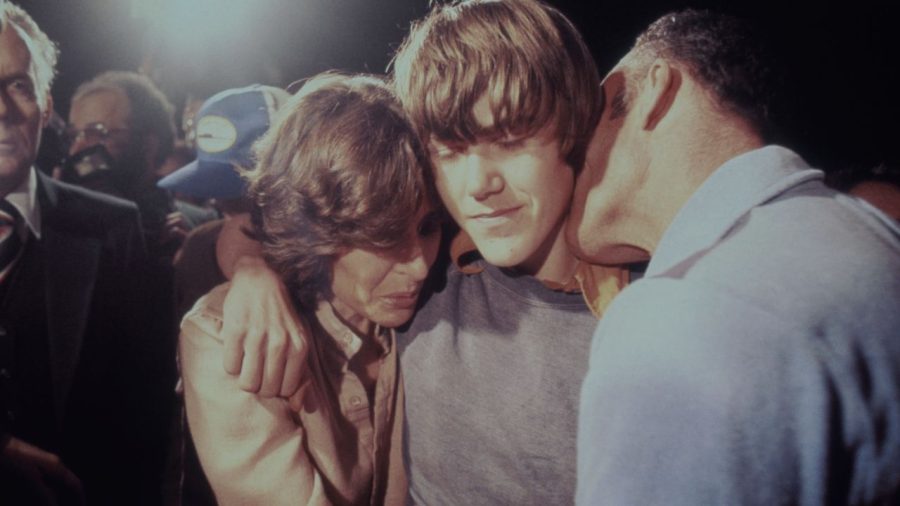‘Captive Audience’ lives up to title with twisting, turning true crime story
Steven Stayner moments after being reunited with his parents in 1980
April 25, 2022
“Captive Audience: A Real American Horror Story” details the whirlwind case of the disappearance and re-emergence of Steven Stayner. Told over the course of three episodic installments, this brand new Hulu docuseries depicts the chilling aftermath of Stayner’s return and the unspeakable tragedies that followed. The documentary conveys the narrative through a series of interviews, clips from the TV adaptation “I Know My First Name Is Steven” (1989), archival news footage and interviews.
Beginning with the 1972 disappearance of 7-year-old Stayner in the first episode, the series makes sure to key in audiences about every element of the highly publicized missing persons case. Interviews with Stayner’s mom help tie in a more emotional perspective to the expository-heavy explanations. Hearing a mother speak about the emotions she felt when her son disappeared is absolutely heartbreaking. When Stayner’s eventual return is documented, audiences sympathize with the Stayner family and those involved.
Each episode peels back the onion further on the events surrounding the case, continually captivating viewers with intriguing developments throughout the three-episode run. Just when audiences think there is no way this story could get even wilder, the third episode comes around and takes things in an absolutely unexpected direction.
With the use of clips from the film adaptation and a slew of archival news clips, “Captive Audience” effectively utilizes several mediums to tell Stayner’s unbelievable story. The emotional first-person accounts anchor the flashy news stories and film scenes with a sense of stark reality. Archival interviews with Stayner from talkshows and newscasts offer an interesting perspective on how the mass publication of the events affected the main individual involved. While newscasts and articles present Stayner’s return in a hope-filled light, the interviewees emphasize the layered reality of the situation.
One strange choice in the format of the documentary’s content is the moments where the now-grown-up actor Corin Nemec, who portrayed Stayner in the TV film, reads out transcriptions from statements made by the real Stayner. This only serves to further complicate the narrative, making viewers remember and categorize yet another on-screen interviewee. Additional moments — in which the producers of the TV adaptation discuss how to emphasize certain events from the real case while in production on the project — offer more confusion than clarification.
An extremely interesting element and unique perspective that the documentary follows is its comparison and contrast of how Hollywood interprets a tragedy versus the feelings of those actually involved. Cutting between the hopeful, almost whimsical moments in the adaptation and contrasting it with firsthand witnesses and real archival footage is extremely fascinating.
“Captive Audience” depicts a true narrative that certainly needs to be seen to be believed. An impressive amount of archival footage combined with emotional interviews and eerie film footage help unravel this historical event through three endlessly engaging installments.
4/5



